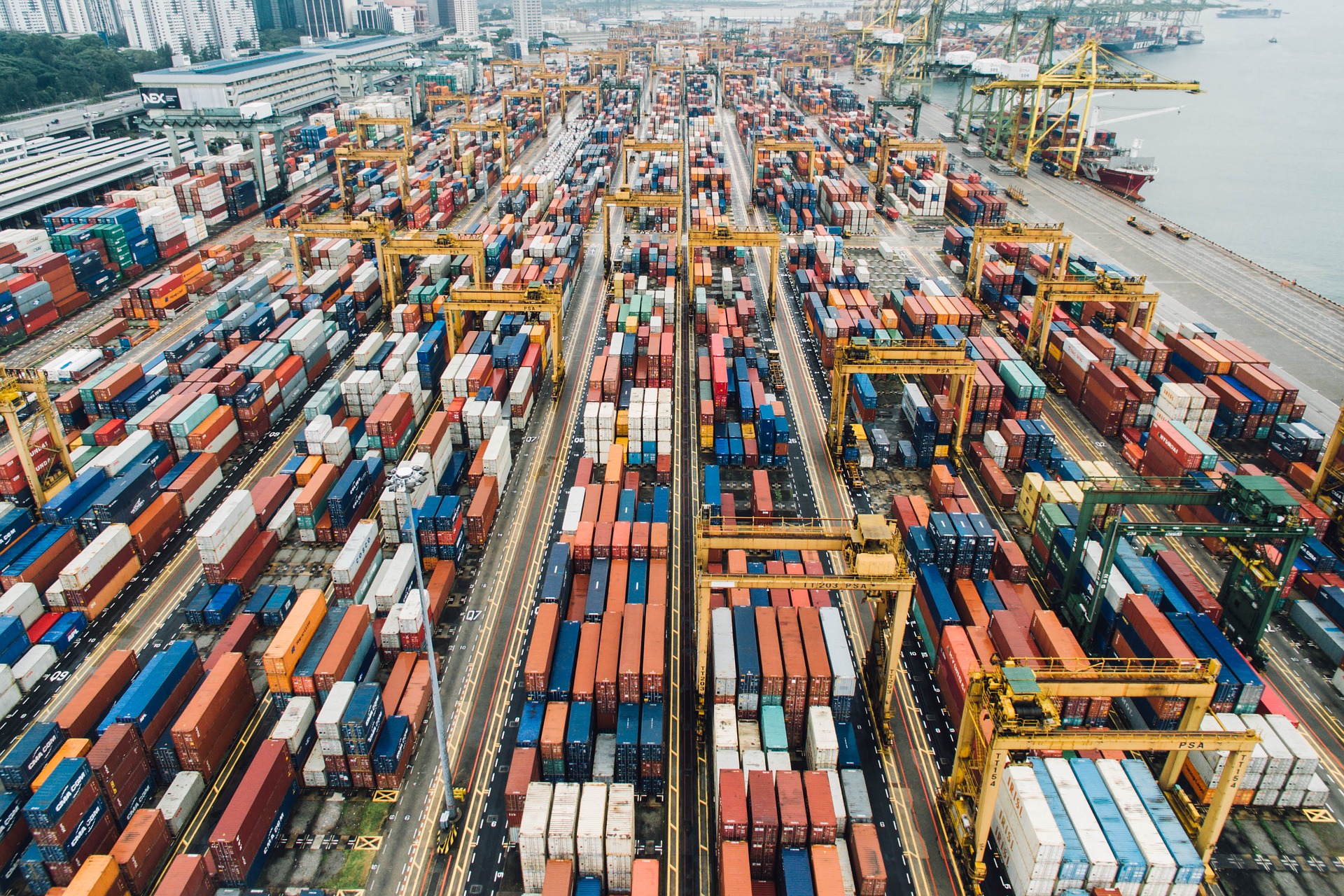In the second of a series of three articles, Prof. Benny Mantin from the Centre for Logistics and Supply Chain Management at the University of Luxembourg looks at the challenges faced by the logistics and transport sector.

Global logistics is a pain point for many stakeholders in the industry. With shipping cost soaring, airfreight rates sky-rocketing, and truck drivers heavily sought after, many firms are experiencing challenging trade-offs and have tough decisions to make: how to ship goods to their destinations? Does it make sense to pay more and expedite? Ultimately, given the higher shipping cost, who shall pay for the added cost?
The shipping industry is going through an arms race as container ships are getting larger and larger. The largest container ship at the moment is the HMM Algeciras with a jaw dropping capacity of 24,000 TEUs (Twenty-foot Equivalent Unit, the standard intermodal container). That’s an increase of about 20% in only five years. This increase allows the vessels to ship goods at a lower operational cost.
Concentration of traffic
However, this marks a magnificent degree of consolidation. There are only a handful of ports that can handle such large vessels. What we observe is a steady concentration of traffic at a small number of global ports. It should not come at a surprise that once a terminal closes down due to covid (as was the case at Ningbo-Zhoushan—the world’s busiest cargo port), shockwaves are felt throughout. That is, long and complex supply chains that heavily rely on a limited number of distribution hubs are more susceptible to become bottlenecks when disruptions take place. And the current bottlenecks trigger excessive shipping rates. As one practitioner stated recently: “We now pay airfreight rates for ocean shipping”.
While different, the passenger airline industry has terminated its carrying capacity arms race recently (with a little help from covid) as the A380 is now breathing its last.
Similar to shipping, airfreight demand and rates are higher than ever. Earlier the industry benefited from the elimination of the under-the-belly capacity, that is the cargo space in passenger airplanes that disappeared once airborne passenger traffic ground to a halt during the early days of the pandemic. Now passenger flows are resuming, but nevertheless, airfreight is still the king. Given the excessive delays and higher rate in ocean shipping, air cargo carrier can continue enjoying a surge in demand.
Truck drivers in decline
Trucks offer a versatile and flexible door-to-door service. While attractive to shipping companies, truck driving is becoming less and less attractive as an employment opportunity. The decline in the number of truck drivers has been visible for a while, and covid made things worse. Over the years, cost-saving measures have pushed firms to install sleeping cabins on their trucks and many drivers—instead of spending the night at motels or hotels—now end up staying in lay-bys for the weekend. This is accompanied by shrinking wage premiums, tough working conditions, and elimination of military Heavy Good Vehicles (HGV) licensees. This male dominated sector—only 3% of drivers are female—experiences severe shortages, with some estimating the need to amount to about 400,000 truck drivers in Europe alone. Relief can come through improvement of work conditions, investment in automation, smoothening of operations and reduction of dwell times, and possibly allowing higher capacity trucks on major highways.Trucks can and need to operate in better unison with rail
More importantly, trucks can and need to operate in better unison with rail. Rail is not flexible and requires major investments, but it can offer 24/7 services and connect major nodes at higher speed, in particular distant nodes. The rail system in Europe has suffered from under-investment in the past decades and it still resembles a patchwork of connections. A functioning rail system should relax some of the restrictions currently in place (such as language requirements and constraints on number of wagons) and harmonise the network across the continent (such as the voltage and signalling system used) which is something the EU has been working on for more than two decades with limited progress.
Ultimately, the objective shall be to facilitate fast flows of cargo between major nodes in the European network from which it will be distributed via trucks to their final destinations. Naturally, rail is not the solution to everything, but careful long-term planning can offer substantial relief.
Container is king
International logistics is characterised by the dominance of the standard carrying unit: the container. One might speculate that well-balanced global flows of goods imply that containers always move around goods from one point to the next. However, reality is far from that. One of the key challenges in logistics is managing of the flow of empty containers. While some empty containers sit idle at ports—there were some 65,000 of them at the Port of Los Angeles recently—and other waiting areas, shippers elsewhere are scrambling to find empty containers to ship their goods to their customers. It is much more profitable to ship loaded containers, but the run to move goods amplifies the severity of the challenge as trucks and vessels avoid wasting time handling empty containers and would rather head to the next customer with goods to ship.
As a solution to ease the situation, a pooling mechanism for better rotation of containers needs to be developed. They can be regional pools between companies (some receiving containers, some sending containers), and global pools between large shipping companies. This will require the coordination of many players in this industry, which will be challenging. Hence, alternatives such as investing in collapsible containers should be considered. The technology exists and it is estimated to save up to 57% of inland transportation costs, but firms are reluctant to embrace it given its higher investment price. Further, operators need to find the right balance between collapsible containers and regular ones: to make it affordable, one needs several collapsible containers to go the same way.






